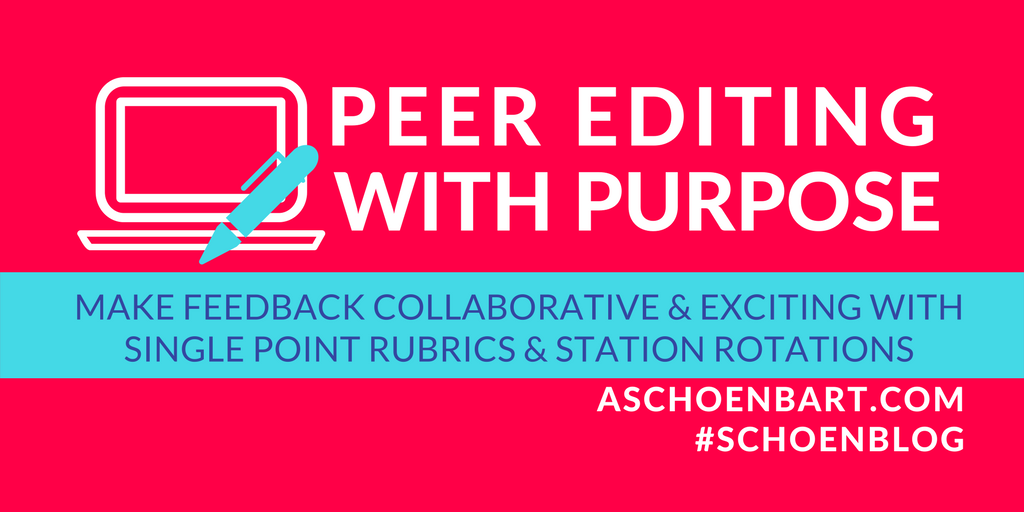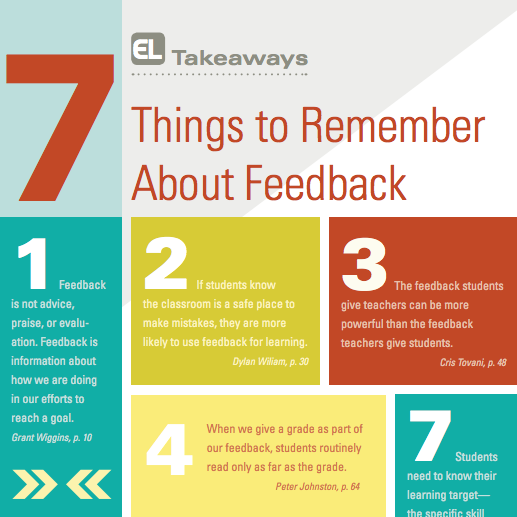Peer Editing With Purpose: Single Point Rubrics Make Peer Feedback Exciting


One of my big teaching initiatives for 2017 has been to help students understand more about their learning and progress. Through reflection, self-assessment, rubric deconstruction, and meaningful conversations about grading and feedback, we’ve made major growth. Recently, I was reading a final essay draft and was blown away by one student’s work.
The student in question has weak writing skills and had been completing work inconsistently all year long. But his essay was great--it really impressed me. I couldn’t help but reflect on his growth and question why this assignment had been so effective for him as a writer. I went back through his outlines and process work, and reached a quick conclusion: our peer editing lesson did wonders for this student.
My students usually complete rough drafts, self and peer assess, and then revise. Their feedback and use of rubrics makes my job easier because so much of the feedback is already there from their peers. And because we spend so much time working with rubric language, my students have gotten pretty good at these activities.
This time, however, we focused on the single point rubric technique. This rubrics simply describes proficiency for each quality with one column on descriptors rather than the typical three to six of a writing rubric. For more on single-point rubrics, check out Know Your Terms: Holistic, Analytic, and Single-Point Rubrics from Cult of Pedagogy.
The simplicity of this rubric led to a great peer editing activity that helped students provide specific, meaningful feedback and build a community of writers. And even better, I immediately saw room for growth for next time.
Infographic from Visible Learning

The Activity
In groups of four, each student was assigned a rubric category: content and analysis; command of evidence; coherence, organization, and style; or control of conventions. Their job was simple: read the essay essay for your specific category and provide feedback for that point of the rubric. That was all.
Tools and ideas to transform education. Sign up below.
The students assigned content and analysis read with an eye towards critical thinking and the claim development. For command of evidence, the students looked for the use of evidence, literary elements, and citations. Each student read the work through a specific lens. After a few minutes, the groups rotated papers. Every essay was read four times by four different students with four sets of narrowly focused feedback. And it was all done on paper with highlighters and pens in hand.
This activity allowed for very specific and intensive feedback. Since every student in a group read everyone else’s papers, they were able to discuss and debrief in their groups as a community of writers and editors. The students helped one another as individuals and as a collective group. Students were asked to read at least half the essay in their editing; if time ran out, they simply passed it on to the next group member. More than likely, the mistakes of the first half continued, so like a good teacher providing feedback, students didn’t need to comment on every single issue.
And the work was the better for it. These essays were the easiest long pieces of writing for me to assess this year. The students did the hard work. With their comments and the single point rubrics, I was able to give additional feedback quickly and efficiently, and more often than not, that work had been done by and for the students instead.
Next Time
This time, the feedback was collaborative and a little more exciting than the average peer editing lesson. Next time, though, there’s an easy opportunity for movement, too. Instead of identifying groups by tables, I want to introduce a station rotation aspect, too.
For example, a logical final station involves using Chromebooks for revision. Maybe one station is all green highlighters with the task of only identifying strong evidence. Another station has stickers to provide feedback on grammar and writing. The ideas are still growing and developing, but have a lot of potential to engage students more and more in this growth and learning. I’ve been eager to introduce more movement and explore stations at the high school level and can’t wait to give it a try.
What are your favorite strategies for peer editing, revision, or stations in your classroom? How would you improve these ideas? Please share your thoughts in the comments or on Twitter @MrSchoenbart.
cross posted at www.aschoenbart.com
Adam Schoenbart is a high school English teacher, Google Education Trainer, and EdD candidate in Educational Leadership. He teaches grades 10-12 in a 1:1 Chromebook classroom at Ossining High School in Westchester County, NY and received the 2014 LHRIC Teacher Pioneer Award for innovative uses of technology that change teaching and learning. Read more at The SchoenBlog and connect on Twitter @MrSchoenbart.
